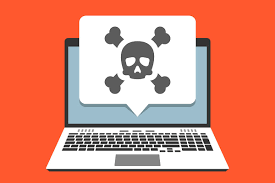In today’s interconnected digital world, malware poses a significant threat to individuals, businesses, and organizations. Malware, short for malicious software, is a term used to describe a wide range of software-based threats that aim to disrupt, damage, or gain unauthorized access to computer systems. In this blog, we will delve into the world of malware, exploring its types, impact, and essential countermeasures.
- Understanding Malware: Malware encompasses various types of malicious software, including viruses, worms, trojans, ransomware, spyware, and adware. Each type has its own unique characteristics and modes of operation. Malware can be introduced into systems through infected email attachments, malicious websites, compromised software, or unauthorized downloads. Understanding the different types of malware is crucial for effective protection and mitigation strategies.
- Impact of Malware: Malware can have severe consequences for individuals and organizations. It can lead to unauthorized access to sensitive data, financial losses, reputational damage, and disruption of operations. Ransomware, for example, encrypts data and demands a ransom for its release, while spyware silently monitors and collects user information. The impact of malware extends beyond financial losses, affecting privacy, productivity, and overall trust in digital systems.
- Prevention and Protection: Preventing malware infections requires a multi-layered approach. Implementing strong security measures such as robust firewalls, antivirus software, and email filters can help detect and block known malware. Regular software updates and patches are essential to address vulnerabilities that malware often exploits. Practicing safe browsing habits, avoiding suspicious downloads, and being cautious with email attachments can significantly reduce the risk of malware infections.
- Incident Response and Recovery: Despite preventive measures, malware infections may still occur. Having a well-defined incident response plan is crucial for minimizing the impact of malware and recovering from an attack. This includes isolating infected systems, conducting thorough malware analysis, and identifying the source of the infection. Regular data backups and disaster recovery planning can help restore systems and data in the event of a malware attack.
- User Education and Awareness: User education plays a vital role in combating malware. Individuals should be trained to recognize common signs of malware, understand safe online practices, and be cautious when interacting with unfamiliar or suspicious content. Regular awareness campaigns and training sessions can empower users to identify and report potential threats promptly.
- Collaboration and Information Sharing: The fight against malware requires collaboration and information sharing among industry professionals, security researchers, and organizations. Sharing knowledge about emerging threats, attack vectors, and mitigation techniques helps the cybersecurity community stay one step ahead of evolving malware. Collaboration also enables the development of stronger defenses and the rapid dissemination of security updates.
Conclusion: The threat landscape of malware is continuously evolving, making it crucial for individuals and organizations to stay vigilant and proactive in their cybersecurity practices. By understanding the different types of malware, implementing preventive measures, having a robust incident response plan, fostering user education and awareness, and promoting collaboration within the cybersecurity community, we can collectively combat malware and protect our digital ecosystems. Remember, staying informed, practicing good cyber hygiene, and regularly updating security measures are essential in safeguarding against the ever-present threat of malware.

Leave a Reply